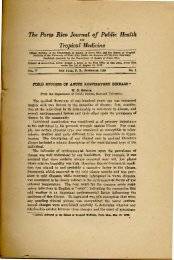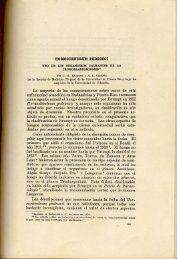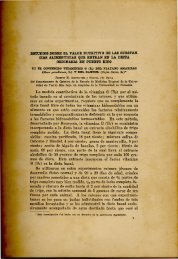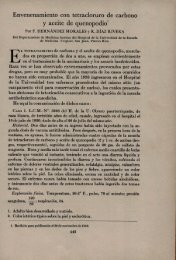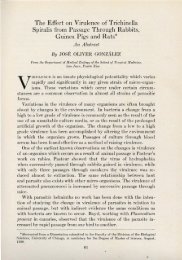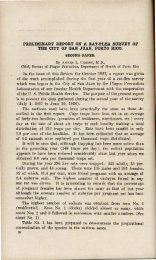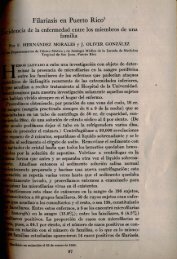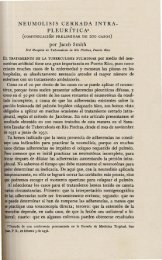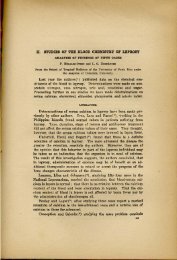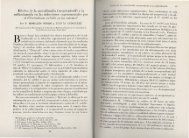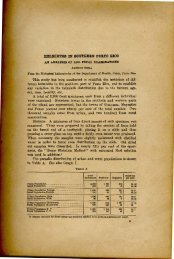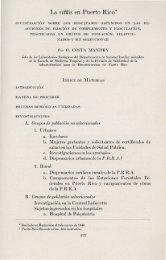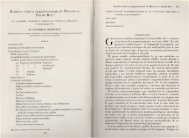Classification of Anemias.pdf
Classification of Anemias.pdf
Classification of Anemias.pdf
You also want an ePaper? Increase the reach of your titles
YUMPU automatically turns print PDFs into web optimized ePapers that Google loves.
168 PORTO RICO JOURNAL OF PUBI,IC HEALTH A..~D TROP. MEDICINE<br />
oeratie spirit which should inspire one who attempts to suggest to<br />
his colleagues a plan <strong>of</strong> action which must be feas ible, and which<br />
should at the same time satisfy their scientific scr uples. That is<br />
to say, it opens the door to all over-wor ked physicians to say how<br />
much or how little clinical laboratory work must needs be performed<br />
before it is possible to arrive at ;.a fairly reliable diagnosis and<br />
treatment" <strong>of</strong> these anemias.<br />
The method employed by the writer, with exceptions imposed by<br />
an unusual pressure <strong>of</strong> work, has been as follows:<br />
( - 1. All persons suffering from clinical sprue or its preceding nutritional<br />
unbalance have their hemoglobin percentage estimated by the<br />
Dare instrument (two minutes).<br />
2. All cases with a hemoglobin <strong>of</strong> less than seventy per cent receive<br />
a red cell and <strong>of</strong>ten a white cell count (ten to twelve minutes).<br />
3. All cases coming under thc latter category with a color index<br />
<strong>of</strong> plus 1. or over and with a hemoglobin below fifty per cent, r eceive<br />
in addition a differential count <strong>of</strong> Jeucoeytes and a careful measurement<br />
<strong>of</strong> ten erythrocytes in a field enabling one to take these ten<br />
cells as they come, one after the other in the same traverse, without<br />
selecting cells that are interestingly large or small (a dangerous<br />
pitfall for an honest average). 'I'hese measurements should be made<br />
with the best filar eye-piece micrometer obtainable ; that is to say, one<br />
which will distinguish one-tenth <strong>of</strong> a micron. In addition, this must<br />
always be supplemented by a count <strong>of</strong> reticulocytes. Both procedures<br />
can be accomplished on the same slide by Jetting a drop <strong>of</strong> a 0.3%<br />
solution <strong>of</strong> cresyl blue in absolute alcohol, fall on the end <strong>of</strong> II glass<br />
slide and when it dries, working the drop <strong>of</strong> blood, caught on the edge<br />
<strong>of</strong> the end <strong>of</strong> another slide, back and forth until it incorporates the<br />
stain before making the smea~. It is now stained by Wright's or<br />
Leishman's method and is ready for cell measurement, reticulocyte<br />
count, and (although the cresyl blue changes some differential characteristics<br />
<strong>of</strong> the leucocyte) a differential count. This should not reo<br />
quire over twenty minutes, and less, if the following technique is<br />
followed:<br />
Let into the eye-piece <strong>of</strong> th e microscope a glass disk enclosing<br />
about 250 cells in a well spread smear. If the cells are unusually<br />
large or small, one circle-full can be counted as a standard fOI" the<br />
other three. The reticulocytes are now counted in four <strong>of</strong> such<br />
circles considering each circle to contain 250 cells, or more or less<br />
circles if a standard count demands it_ One is sure to make a ten<br />
per cent, and possibly a twenty-five per cent error, but this will<br />
not prevent the possibility <strong>of</strong> deducing that there has, or there has



